
Earth
16:30, 20-Jan-2019
Collecting garbage on the roof of the world
CGTN
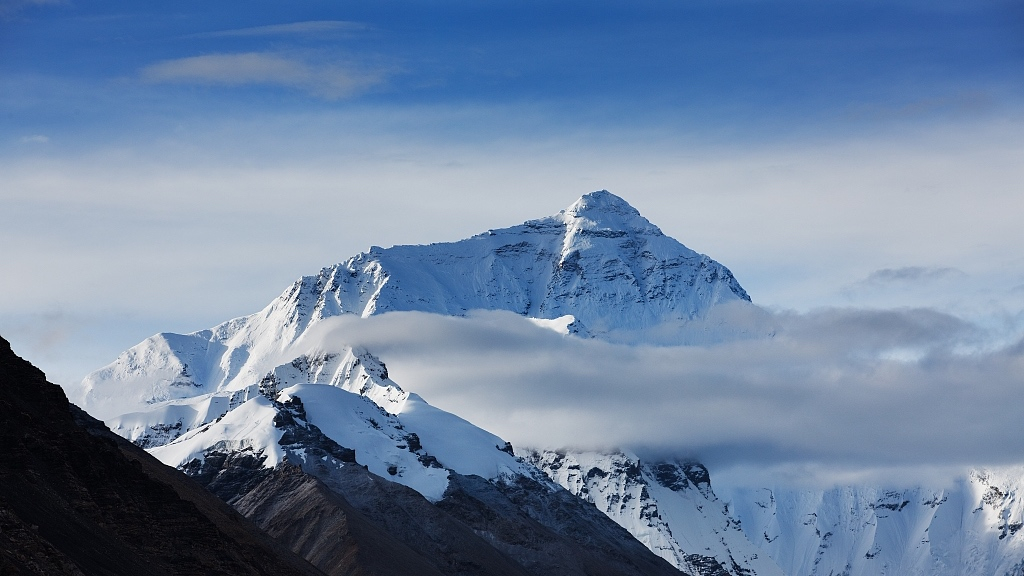
Trash collectors are desperately needed on Mount Qomolangma, as tons of waste have been left on the famed peak by ever-increasing number of visitors.
The climbing season starts at the end of March, and finishes at the end of May. Then a cleanup campaign will be carried out in all areas above 5,200 meters.
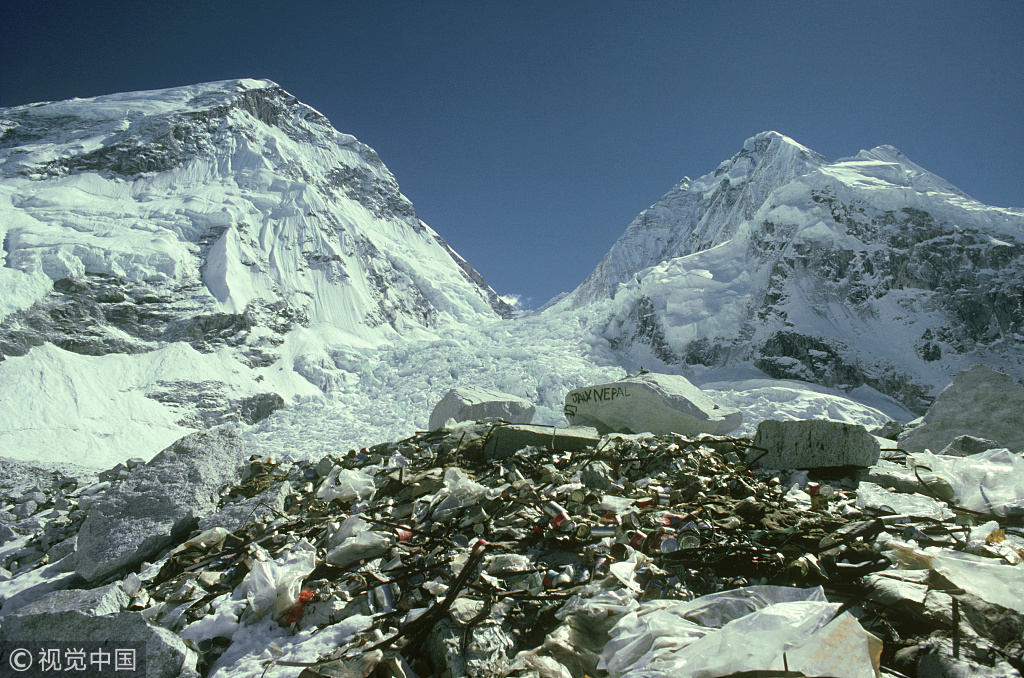
Trash left by expeditions near a base camp of Mount Qomolangma. /VCG Photo
Trash left by expeditions near a base camp of Mount Qomolangma. /VCG Photo
Picking up garbage on Qomolangma is no easy job, as it takes two to three years of training and adjustment. "This may sound cruel, but just picking up a single ring-pull at over 7,000 meters could be a matter of life or death!" said the 32-year-old Cering Dandar, a legendary mountaineer and guide.
He once spent a whole day wriggling gingerly through the ice, just to pick up two oxygen tanks and a plastic cookie bag. Falling into one of the mountain's seemingly bottomless cracks has become his worst nightmare.
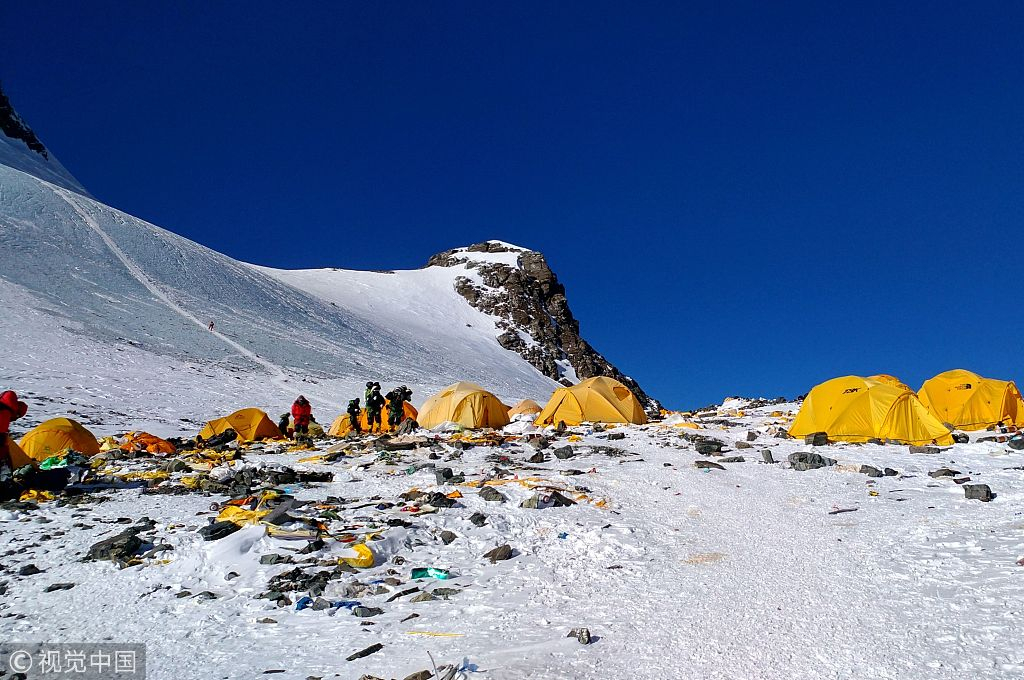
Pollution around Camp 4 of Mount Qomolangma, May 21, 2018. /VCG Photo
Pollution around Camp 4 of Mount Qomolangma, May 21, 2018. /VCG Photo
World's highest dumpsite
"Cans, chocolate, oxygen tanks, tents and sleeping bags. Their colors just don't belong here where everything should be white and blue," said Cering.
This time around, they have collected more than 5,000 kilograms of food garbage, 1,000 kilograms of deserted climbing equipment, and over 2,000 kilograms of human feces from just three privies.
Next year, they will have to do it all over again as a similar amount of domestic garbage will be produced at the camp.
A single collecting expedition can take eight hours. It is not trucks but yaks that are generally used to make the journey.

Yaks are means of transporting the garbage. /VCG Photo
Yaks are means of transporting the garbage. /VCG Photo
Danger at high altitudes
Avalanches, blizzards, altitude sickness – working on Qomolangma is perhaps one of the most dangerous jobs on Earth.
The mountain environment squad is made up of 30 members, mostly guides or liaison officers from the climbers' association.
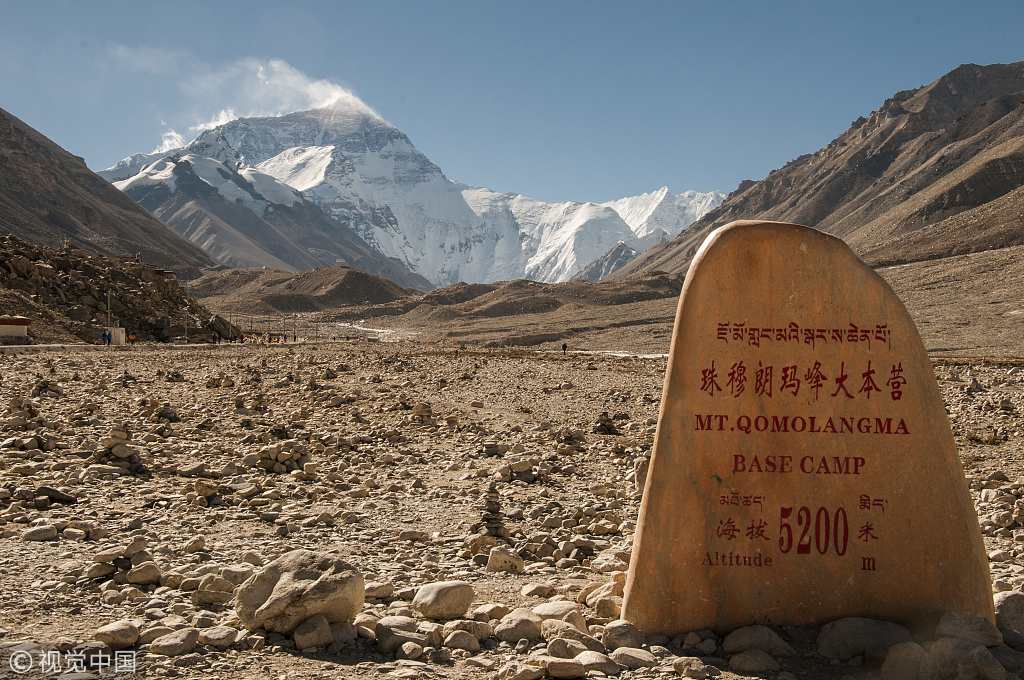
Mount Qomolangma base camp. /VCG Photo
Mount Qomolangma base camp. /VCG Photo
The only three locals on the team pick up garbage from between 5,200 meters at base camp and 6,500 meters.
From 6,500 meters and up, only professional mountaineers like Cering can do the job.
At above 7,000 meters – the death zone – even professional climbers face physical limits. Any unnecessary movement can cause the loss of life.
Reaching 8,000 meters, and even the guides suggest climbers abandon their equipment, such as oxygen tanks, which weigh about 2 kilograms each.
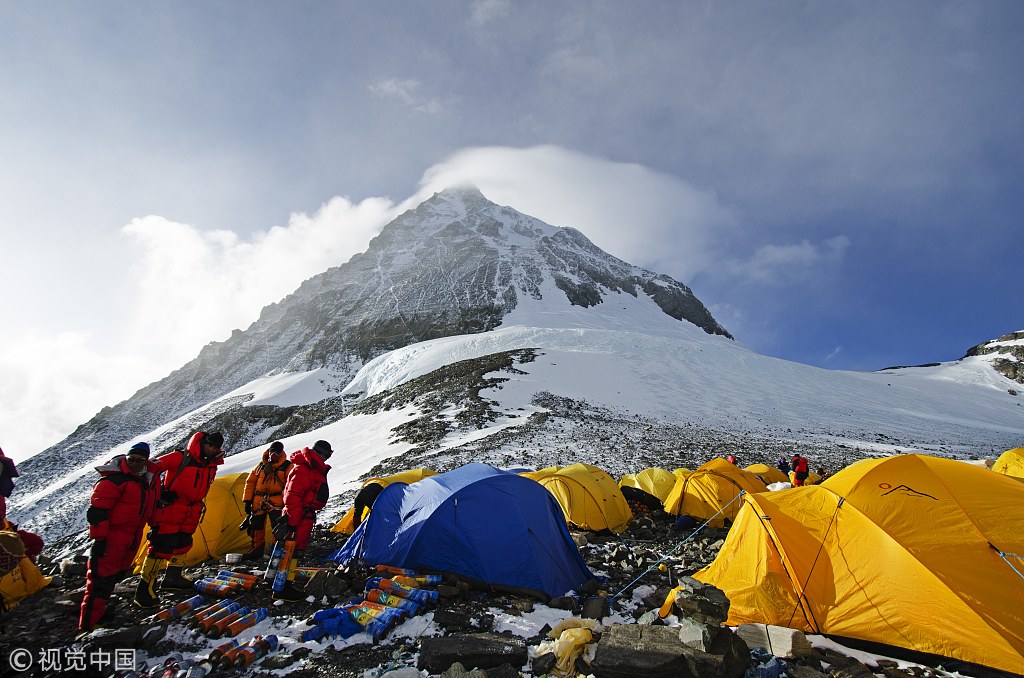
Oxygen checking at 8,000m, South Col of Mount Qomolangma, Nepal. /VCG Photo
Oxygen checking at 8,000m, South Col of Mount Qomolangma, Nepal. /VCG Photo
Protecting the holy mountain
Starting last year, the cleaning work has been better organized.
Domestic garbage is classified as recyclable and non-recyclable, and handed over to the Qomolangma nature reserve administration. Abandoned equipment is carried back to Lhasa, where it is auctioned or turned into art.
Every member of the climbing teams descends carrying at least 8 kilograms of garbage. Volunteers and amateur climbers have also done their part, picking up bottles and plastic bags whenever possible.
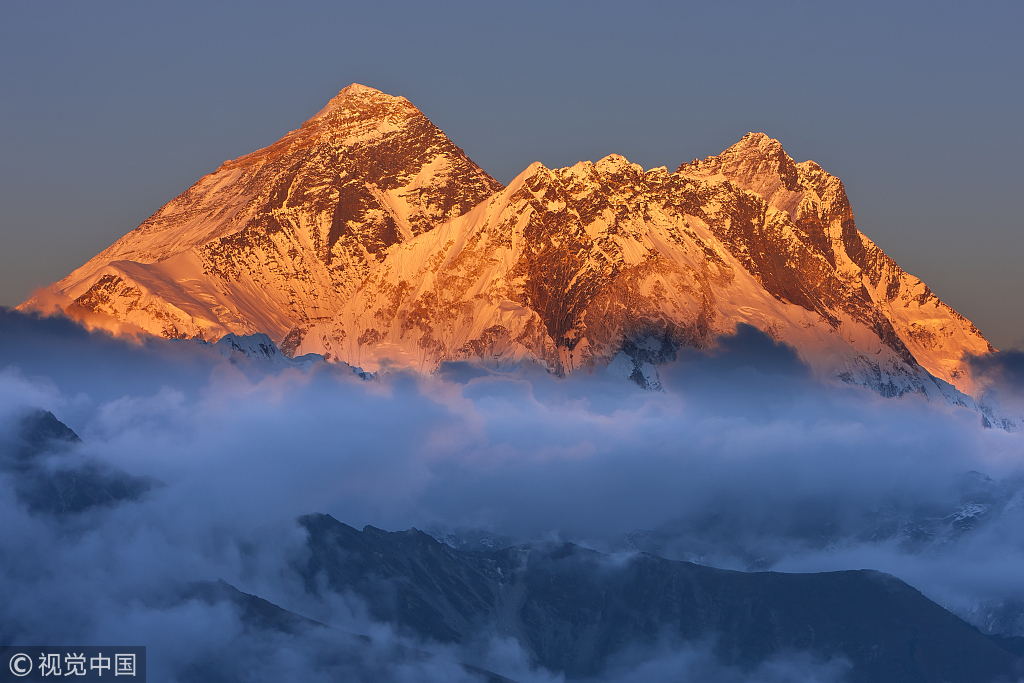
Sunset on Mount Qomolangma. /VCG Photo
Sunset on Mount Qomolangma. /VCG Photo
Protecting the holy mountain goes far beyond just picking up trash.
New disciplinary measures have been put in place for mountain-climbing, tourism, scientific exploration and engineering projects.
The legislation prohibits tree-felling, herding, hunting, as well as collecting and sabotaging turfs in the reserve. Those that disobey the rules are subject to criminal punishment.
"In Tibet, we have the bluest skies and highest mountains," Cering said. "If I could choose again, I would still become a guardian of the holy mountain."
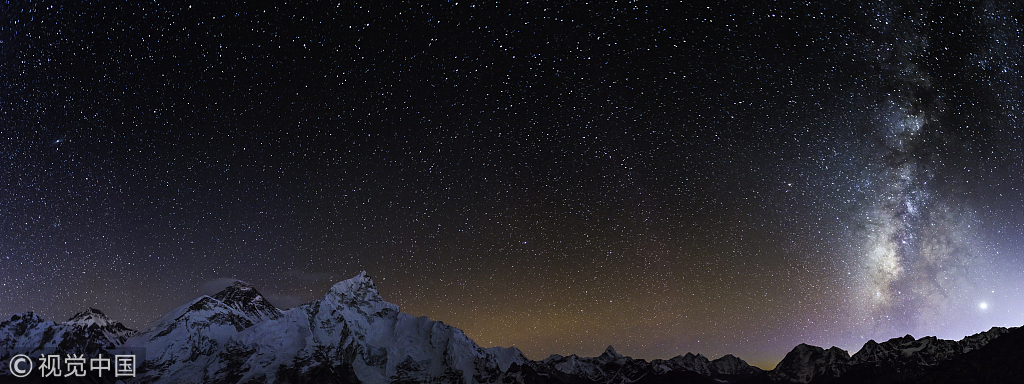
Milky Way over the Himalayas. /VCG Photo
Milky Way over the Himalayas. /VCG Photo
Source(s): Xinhua News Agency

SITEMAP
Copyright © 2018 CGTN. Beijing ICP prepared NO.16065310-3
Copyright © 2018 CGTN. Beijing ICP prepared NO.16065310-3